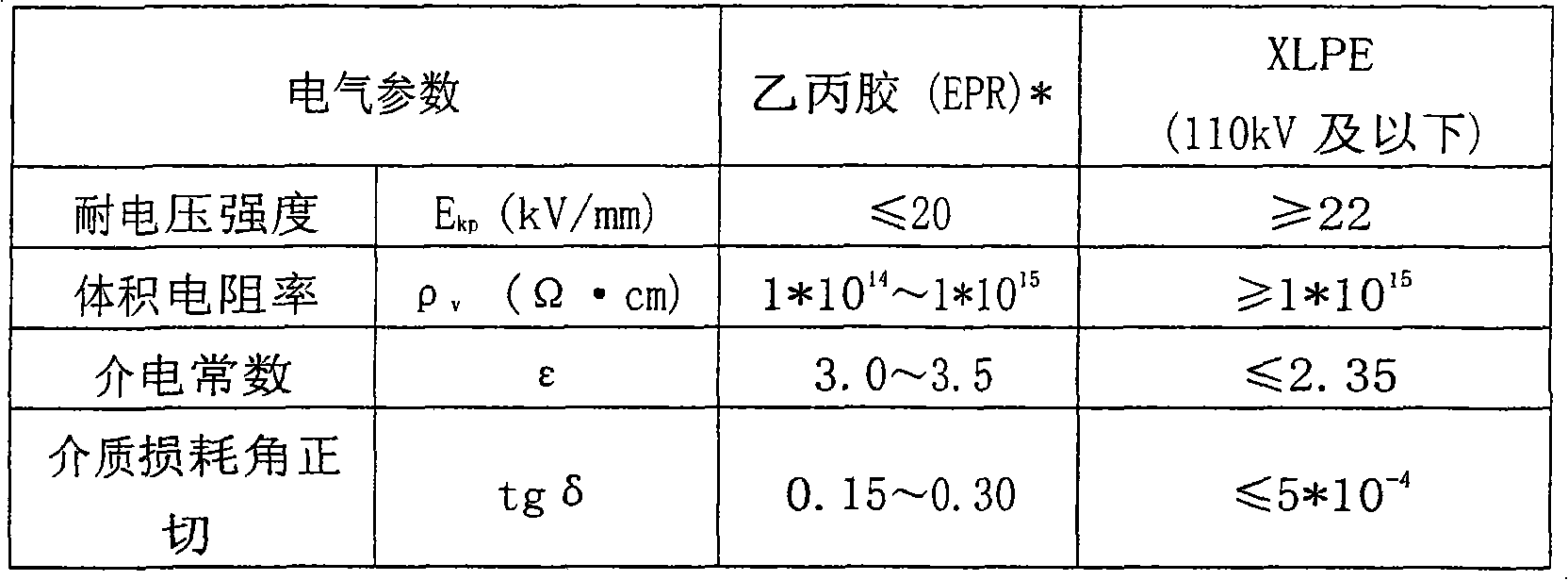Insulating crosslinking polyethylene for winding cable
A cross-linked polyethylene and cable insulation technology, which is applied in the direction of organic insulators, plastic/resin/wax insulators, etc., can solve problems such as difficulty in meeting insulation requirements, increased transmission power loss, and increased dielectric loss of modified XLPE dielectric constant. Achieve the effect of good insulation and good electrical properties
- Summary
- Abstract
- Description
- Claims
- Application Information
AI Technical Summary
Problems solved by technology
Method used
Image
Examples
Embodiment
[0019] Embodiment: Weigh according to the material proportioning in Table 3, according to banburying → double cone feeding single screw replasticized water mist (film) granulation (also can use twin screw granulation) → centrifugal drying → boiling drying → sieving → Measured and packaged to obtain the crosslinked polyethylene of the present invention. The granulation water is deionized pure water, and the moisture content of the dried granules (finished product) is controlled to be ≤0.010% to reduce conductivity. The highest temperature point during the whole production process shall not exceed 105°C. Adding order: LDPE (or LLDPE) and EVA are mixed in the internal mixer for 0.5-1.0 minutes at the same time, then add PISOB (brand B150-200) and mix for 1.5-2.5 minutes, then add DCP and antioxidant 1035 and mix for about 1 minute , put the mixture into a double-cone feeding single-screw machine and then plasticize, and finally granulate, dry, sieve, and pack to get the finished...
PUM
 Login to View More
Login to View More Abstract
Description
Claims
Application Information
 Login to View More
Login to View More - R&D
- Intellectual Property
- Life Sciences
- Materials
- Tech Scout
- Unparalleled Data Quality
- Higher Quality Content
- 60% Fewer Hallucinations
Browse by: Latest US Patents, China's latest patents, Technical Efficacy Thesaurus, Application Domain, Technology Topic, Popular Technical Reports.
© 2025 PatSnap. All rights reserved.Legal|Privacy policy|Modern Slavery Act Transparency Statement|Sitemap|About US| Contact US: help@patsnap.com


